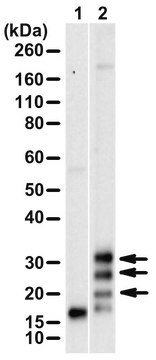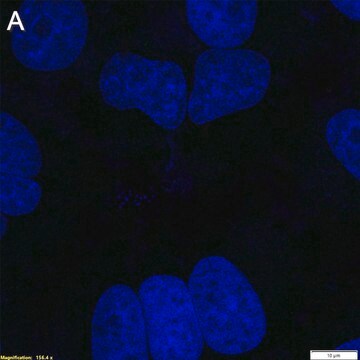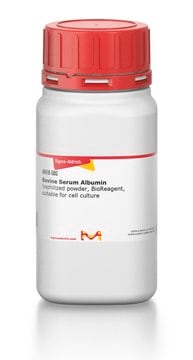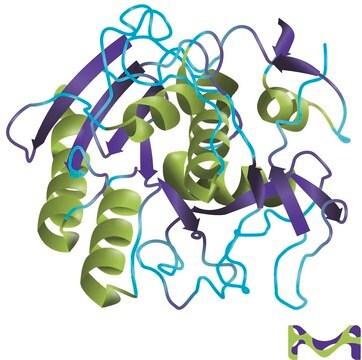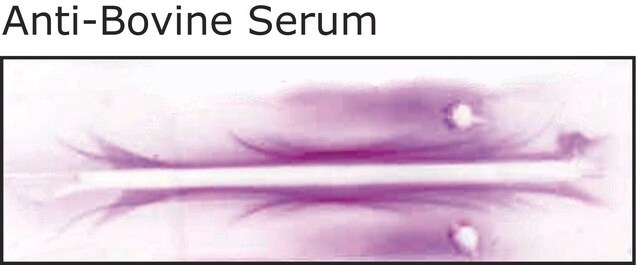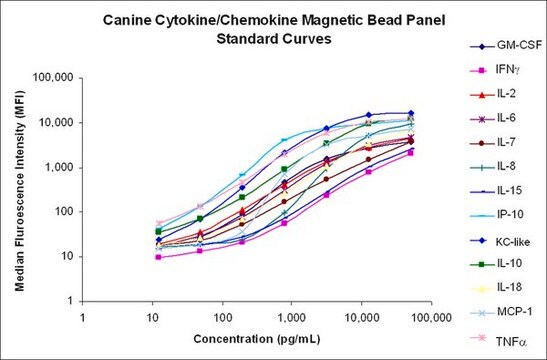MABS2005
Anti-2A peptide Antibody, clone 3H4
clone 3H4, from mouse
Synonim(y):
Anti-2A Antibody
About This Item
Polecane produkty
pochodzenie biologiczne
mouse
Poziom jakości
forma przeciwciała
purified antibody
rodzaj przeciwciała
primary antibodies
klon
3H4, monoclonal
reaktywność gatunkowa
mouse
opakowanie
antibody small pack of 25 μg
metody
immunofluorescence: suitable
immunoprecipitation (IP): suitable
western blot: suitable
izotyp
IgG1κ
Warunki transportu
ambient
docelowa modyfikacja potranslacyjna
unmodified
Opis ogólny
Specyficzność
Immunogen
Zastosowanie
Secondary & Control Antibodies
Immunoprecipitation Analysis: A representative lot detected 2A peptide in HeLa cells expressing SpCas9-P2A or plain HeLa cells, HEK293 cells expressing SpCas9-T2A or plain HEK293 cells (Courtesy of Stefan Schuchner, Ph.D. and Egon Ogris, M.D., Medical University of Vienna, Austria).
Immunofluorescence Analysis: A representative lot detected 2A peptide in HeLa cells transiently transfected with SaCas9-T2A-GFP (Courtesy of Stefan Schuchner, Ph.D. and Egon Ogris, M.D., Medical University of Vienna, Austria).
Jakość
Western Blotting Analysis: 0.5 ug/mL of this antibody detected 2A peptide in 10 µg of NIH3T3 expressing SpCas9-T2A-Puro cell lysate.
Opis wartości docelowych
Postać fizyczna
Przechowywanie i stabilność
Inne uwagi
Oświadczenie o zrzeczeniu się odpowiedzialności
Nie możesz znaleźć właściwego produktu?
Wypróbuj nasz Narzędzie selektora produktów.
Kod klasy składowania
12 - Non Combustible Liquids
Klasa zagrożenia wodnego (WGK)
WGK 1
Certyfikaty analizy (CoA)
Poszukaj Certyfikaty analizy (CoA), wpisując numer partii/serii produktów. Numery serii i partii można znaleźć na etykiecie produktu po słowach „seria” lub „partia”.
Masz już ten produkt?
Dokumenty związane z niedawno zakupionymi produktami zostały zamieszczone w Bibliotece dokumentów.
Nasz zespół naukowców ma doświadczenie we wszystkich obszarach badań, w tym w naukach przyrodniczych, materiałoznawstwie, syntezie chemicznej, chromatografii, analityce i wielu innych dziedzinach.
Skontaktuj się z zespołem ds. pomocy technicznej